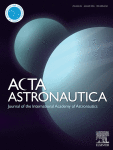Keywords
Maneuver detection
Maneuver estimation
Data association
Trajectory optimization
Convex optimization
© 2023 The Author(s). Published by Elsevier Ltd on behalf of IAA.

Maneuver estimation can be posed as a fuel-optimal second-order cone problem.
If a maneuver is feasible, it is detected in milliseconds.
The conjugate unscented transform transfers the state covariance into a maneuver profile.
Specific coordinates allow polynomial runtime and global convergence.
The maneuver time profile is estimated with knowledge of only the onboard propulsion system.
Building and maintaining a catalog of resident space objects involves several tasks, ranging from observations to data analysis. Once acquired, the knowledge of a space object needs to be updated following a dedicated observing schedule. Dynamics mismodeling and unknown maneuvers can alter the catalog’s accuracy, resulting in uncorrelated observations originating from the same object. Starting from two independent orbits, this work presents a convex-optimization based approach to find admissible maneuvers to correlate the two orbits. In case of a feasible maneuver detection, the time profile of the maneuver is estimated, exploiting the conjugate unscented transform to map the orbits’ covariance into the maneuver uncertainty. It is also shown that a careful choice of the coordinate system is pivotal to obtain the solution in one iteration, without successive convexification.
Maneuver detection
Maneuver estimation
Data association
Trajectory optimization
Convex optimization
© 2023 The Author(s). Published by Elsevier Ltd on behalf of IAA.
Add Comment